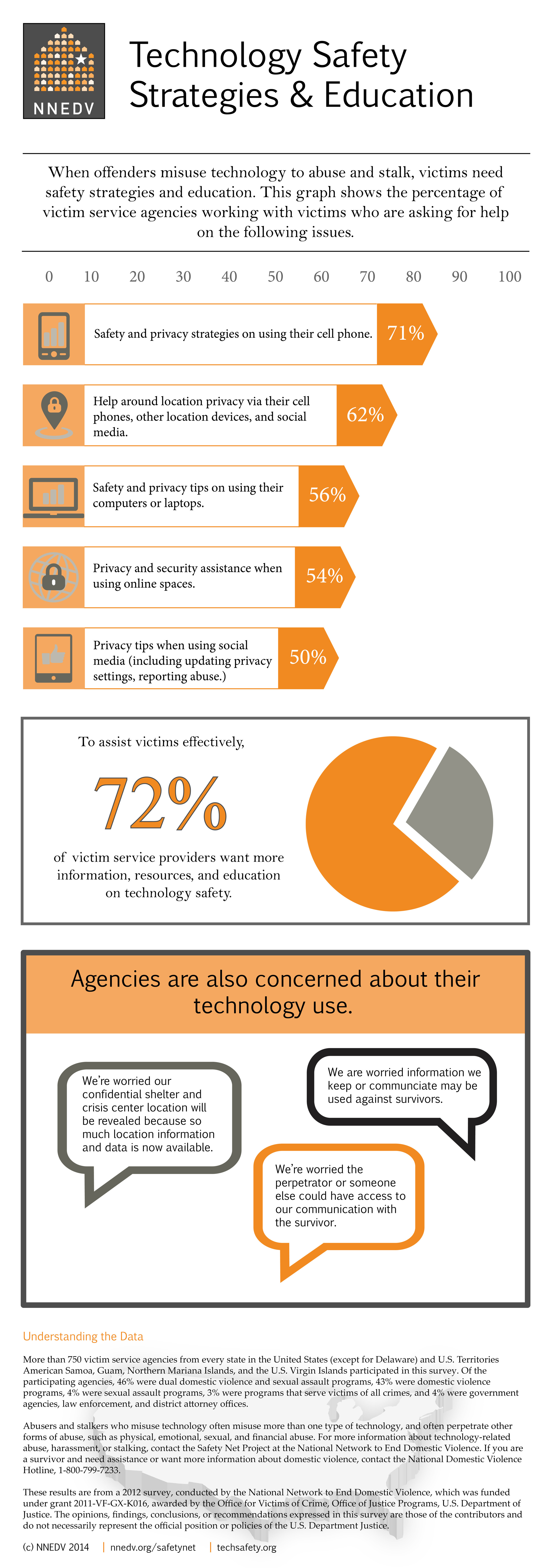New Survey: Technology Abuse & Experiences of Survivors and Victim Service Agencies
/In a survey conducted by the Safety Net Project at NNEDV, nearly 90% of programs report that survivors come to them for help after abusers intimidated and made threats via cell phone, text messages and email, and 75% of programs noted that abusers accessed victim’s accounts (email, social media, etc.) without the victim’s consent and oftentimes without their knowledge. Intimidation, threats, and access of information about victims aren’t new tactics within the context of domestic violence, sexual assault, stalking, or trafficking. However, the use of technology as a tool to facilitate these tactics means that the harassment and abuse can be much more invasive, intensive, and traumatizing.
Technology gives abusers more methods of controlling and monitoring victims. Seventy-two percent of programs reported that a survivor’s location is being tracked by smart phones or other devices; more than half of the programs report that survivors are saying abusers are spoofing caller ID (manipulating caller ID so that it appears as though someone other than the abuser is calling); and nearly 70% of programs report that abusers are posting pictures or videos of victims online for the purpose of distressing or harming the victim. Programs also report that survivors are asking for help on how to manage their technology and stay safe while using them. Survivors frequently ask for help with cell phones (71%); followed by how to manage location privacy, whether through cell phones or other location devices (62%), and computer or laptop use (56%).
These two newest infographics show how technology is being misused by abusers against survivors. NNEDV conducted a survey of more than 750 victim service agencies across the United States, including American Samoa, Guam, the Northern Mariana Islands, and the U.S. Virgin Islands, through a grant from the Office for Victims of Crime. This is one of the most comprehensive reviews of what survivors are telling victim service providers about how abusers misuse technology to harass, stalk, and harm.




